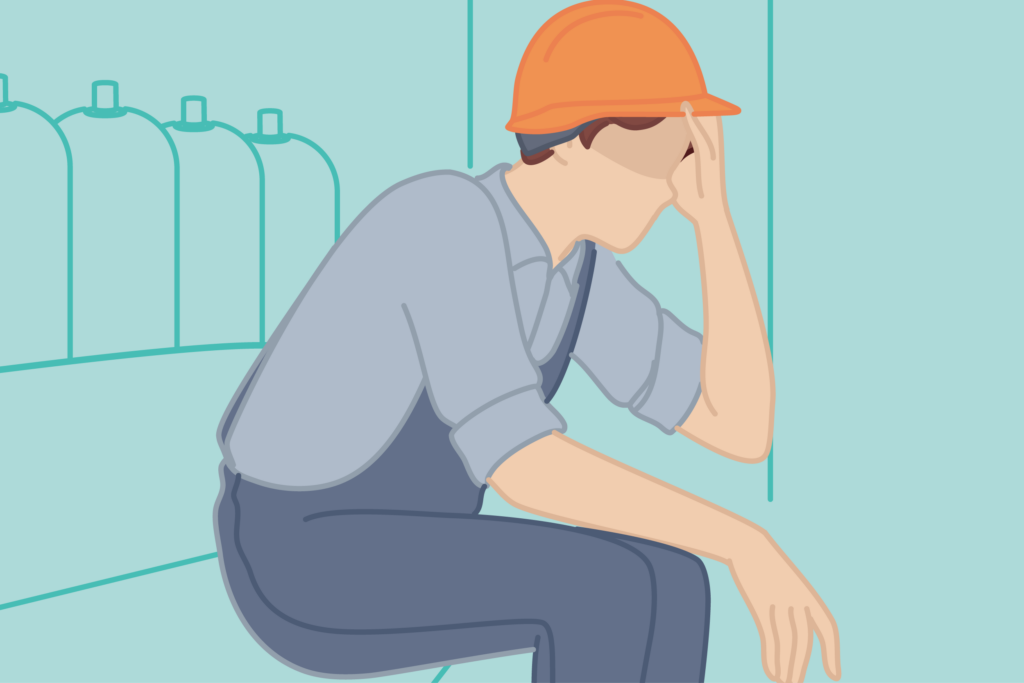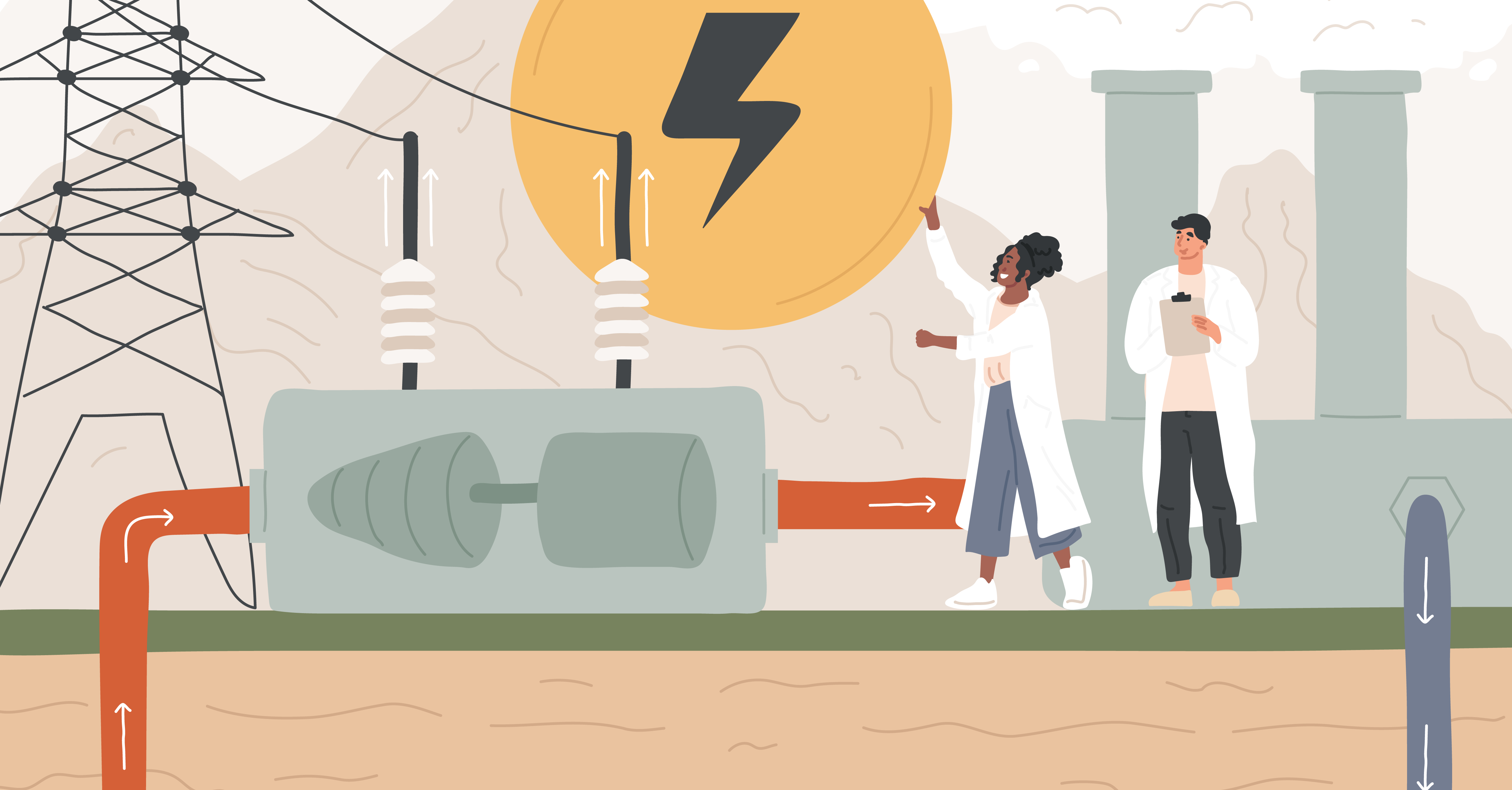10 Signs of Worker Fatigue You Can’t Afford to Ignore
July 28, 2021
8 minute read

Many people work long hours or irregular shifts, often spending more than 40 hours a week on the job. Hundreds of millions work full time during evenings, nights, or on rotating schedules. These work patterns can lead to workplace fatigue.
Shift workers may have to work days, evenings, nights, and/or on a rotating or on-call basis. They may work extended shifts (more than 8 hours), rotating or irregular shifts, or consecutive shifts, resulting in far more hours than the typical 40-hour workweek. Long work hours and the associated fatigue can increase the risk of injuries and accidents and can contribute to poor overall health. Truck driver fatigue, for example, is said to be responsible for 13% of truck crashes in the USA.
Research shows that working long hours can lead to more stress, unhealthy eating, less exercise, illness, alcoholism, and mental health issues. People who work over 55 hours a week are 1.66 times more likely to have depression and 1.74 times more likely to develop anxiety than those working 35–40 hours a week, even when other factors are considered, according to a report from the National Library of Medicine.
Recognizing the signs of worker fatigue is important because it can affect both your safety and the safety of your coworkers.
No single definition of worker fatigue
In occupational health and safety, there is no single definition of worker fatigue.
Fatigue can show up in different ways, including mental, physical, or personal feelings. If you notice these signs, you may be experiencing fatigue.
Sometimes it is short-term, caused by stress at work or home or a tight deadline. Other times, it is long-term, often linked to sleep problems, working too much, or ongoing stress.
- Mental state: Reduced mental capacity, inattentiveness, indecisiveness
- Physical state: Physiological weakness or degradation, physically exhausted, weak
- Subjective state: Tired, drowsy, weary, irritable
There is no single solution for everyone, but here are some general tips that workers and employers can use to manage fatigue and stay safe at work.
Tips for workers managing fatigue
How to get better rest:
- You’ll sleep better if your room is comfortable, dark, cool and quiet.
- If it takes you longer than 15 minutes to fall asleep, set aside some time before bedtime to do things to help you relax. Try meditating, relaxation breathing and progressive muscle relaxation.
- Before you begin working a long stretch of shifts, try “banking your sleep”—sleeping several extra hours longer than you normally do.
- After you’ve worked a long stretch of shifts, remember it may take several days of extended sleep (for example, 10 hours in bed) before you begin to feel recovered. Give yourself time to recover.
- Avoid sunlight or bright lights 90 minutes before you go to sleep, when possible. Exposure to light just before bedtime can cause you to feel more awake.
- If you work a night shift and drive home during sunlight hours, try wearing sunglasses to reduce your exposure to sunlight during your drive home.
- Consider using blackout shades at home when sleeping.
- Take naps when you have the opportunity.
- A 90-minute nap before working a night shift can help prevent you from feeling tired at work.
What foods to eat
- Eat healthy foods and stay physically active because it can improve your sleep.
- Before you go to sleep, avoid foods and drinks that can make falling asleep more difficult:
- Avoid alcohol, heavy meals and nicotine for at least 2–3 hours before bedtime.
- Don’t drink caffeine within 5 hours of bedtime.
Dealing with fatigue on the job
- Know what to do if you feel too tired to work safely.
- Use a buddy system while you’re at work. Check in with each other to ensure everyone is coping with work hours and demands.
- Watch yourself and your coworkers for signs of fatigue—like yawning, difficulty keeping your eyes open and difficulty concentrating. When you see something, say something to your coworkers so you can prevent workplace injuries and errors.
- Find out if your employer has a formal program to help you manage fatigue on the job. Read information about the program and ask questions so you fully understand your employer’s policies and procedures for helping employees manage fatigue.
Safety
- Report any fatigue-related events or close-calls to a manager to help prevent injuries and errors.
- Do not work if your fatigue threatens the safety of yourself or others. Report to a manager when you feel too tired to work safely.
Related article: ISO 45001: How to Keep Your Workers and Business Safe
Tips for employers managing fatigue
What steps should employers take to reduce workplace fatigue for workers? Here are a few ideas.
Safety culture:
- Create a culture of safety with clear coordination and communication between management and workers. This can include establishing a Fatigue Risk Management Plan or strategies for fatigue mitigation on the job. Share and ensure that employees understand the processes.
- Spot the signs and symptoms of fatigue (e.g., yawning, difficulty keeping eyes open, inability to concentrate) in employees and take steps to mitigate fatigue-related injury or error.
- Create a procedure that does not punish workers for reporting when they, or their coworkers, are too tired to work safely. Build it into team comradery as an example of how management and staff can support each other.
Related article: Safety I and Safety II
Work procedures and processes:
- Develop processes to relieve a worker from their duties if they are too tired to work safely.
- If available, and agreeable with workers, consider assigning workers who are just starting their shifts onto safety-critical tasks.
- If possible, rotate workers or groups of workers through tasks that are repetitive and/or strenuous.
- If possible, schedule physically and mentally demanding workloads and monotonous work in shorter shifts and/or during day shifts.
- Provide information for workers on the consequences of sleep deprivation and resources to assist workers managing fatigue.
Scheduling:
- Allow staff enough time to organize their off-duty obligations and get sufficient rest and recovery.
- Schedule at least 11 hours off in-between shifts (each 24-hour period), and one full day of rest per seven days for adequate sleep and recovery.
- Avoid penalizing those who may have restricted availability to work extra shifts/longer hours (e.g., caring for dependents).
- For rotating shift work, use forward rotations (day to evening to night) and provide staff with sufficient notice when scheduling, particularly if there is a shift change.
- Avoid scheduling staff for more than 12 hours, if possible.
- Formalize and schedule regular breaks.
- Provide alternative transportation to and from work and mandatory paid rest time prior to driving commutes after work, when possible.
- Consider arranging for nearby offsite housing to reduce travel times, allowing for more rest and recovery.
Related webinar: Mobile-First EHS Strategies that Engage Workers
How a digital safety management system can help
Tired workers can forget or skip basic safety steps, even in workplaces with strong safety cultures. Usually, there are warning signs before an incident. Often, workers have shown small mistakes or risky behavior for a while before an accident happens.
In the past, safety leaders often did not notice fatigue-related risks until after an incident, when they investigated the cause. Now, digital safety management systems can collect data from observations to help prevent these incidents.
Mobile devices let every frontline worker use the management system. Workers may not have access to computers at work, and paper forms are often not practical. Mobile apps make it easy for workers to report unsafe behavior or hazards, which can help spot fatigue and prevent incidents.
Artificial intelligence is also helping to keep workplaces safe. For example, Protex AI uses existing CCTV cameras to watch for unsafe behavior and activities that could cause incidents. It monitors the workplace all the time and records incidents and behaviors, including those linked to worker fatigue. This data goes directly to the Intelex system, giving safety leaders better insight into early warning signs of fatigue so they can address problems before they lead to injuries or damage.
Helping workers do their best work
Workplace fatigue isn’t unusual. As frontline workers deal with the demands of increasingly complex workplaces and demanding market conditions, many workers are having to work longer hours and be more productive. That can sometimes mean longer shifts and less sleep. It is therefore important for organizations to have procedures and technology in place to ensure workers can get the rest they need and prevent fatigue from causing careless behavior in the workplace.
Fatigue can lead to serious safety risks, but proactive observations can help prevent incidents before they happen. Watch our product demo to see how Intelex Safety Observations Software can enhance safety by identifying and addressing worker fatigue in real-time.






